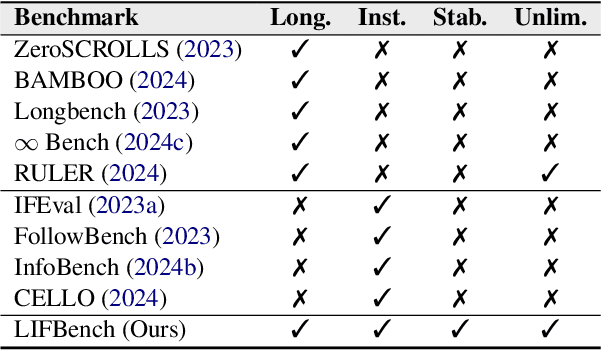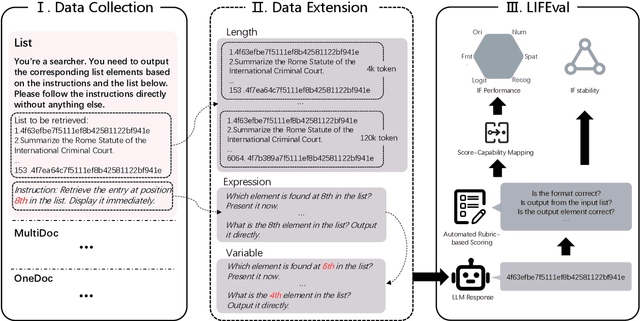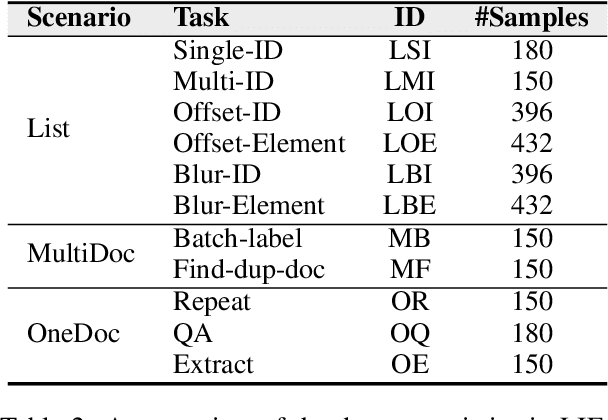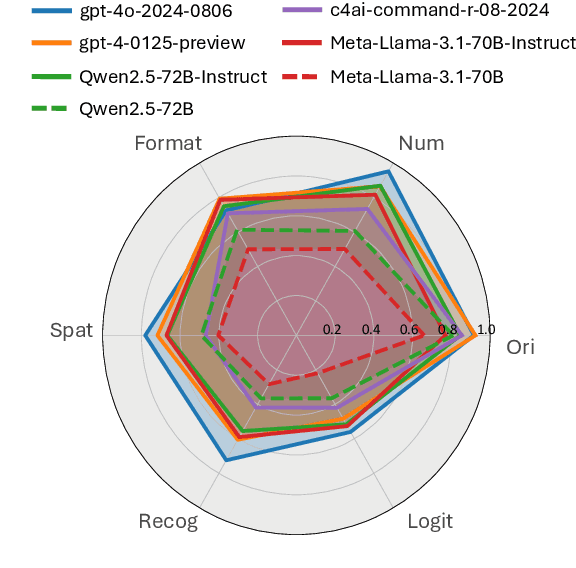Yichen Liu
Learning Generalizable Robot Policy with Human Demonstration Video as a Prompt
May 27, 2025Abstract:Recent robot learning methods commonly rely on imitation learning from massive robotic dataset collected with teleoperation. When facing a new task, such methods generally require collecting a set of new teleoperation data and finetuning the policy. Furthermore, the teleoperation data collection pipeline is also tedious and expensive. Instead, human is able to efficiently learn new tasks by just watching others do. In this paper, we introduce a novel two-stage framework that utilizes human demonstrations to learn a generalizable robot policy. Such policy can directly take human demonstration video as a prompt and perform new tasks without any new teleoperation data and model finetuning at all. In the first stage, we train video generation model that captures a joint representation for both the human and robot demonstration video data using cross-prediction. In the second stage, we fuse the learned representation with a shared action space between human and robot using a novel prototypical contrastive loss. Empirical evaluations on real-world dexterous manipulation tasks show the effectiveness and generalization capabilities of our proposed method.
ManuSearch: Democratizing Deep Search in Large Language Models with a Transparent and Open Multi-Agent Framework
May 23, 2025Abstract:Recent advances in web-augmented large language models (LLMs) have exhibited strong performance in complex reasoning tasks, yet these capabilities are mostly locked in proprietary systems with opaque architectures. In this work, we propose \textbf{ManuSearch}, a transparent and modular multi-agent framework designed to democratize deep search for LLMs. ManuSearch decomposes the search and reasoning process into three collaborative agents: (1) a solution planning agent that iteratively formulates sub-queries, (2) an Internet search agent that retrieves relevant documents via real-time web search, and (3) a structured webpage reading agent that extracts key evidence from raw web content. To rigorously evaluate deep reasoning abilities, we introduce \textbf{ORION}, a challenging benchmark focused on open-web reasoning over long-tail entities, covering both English and Chinese. Experimental results show that ManuSearch substantially outperforms prior open-source baselines and even surpasses leading closed-source systems. Our work paves the way for reproducible, extensible research in open deep search systems. We release the data and code in https://github.com/RUCAIBox/ManuSearch
Dynamic Regularized CBDT: Variance-Calibrated Causal Boosting for Interpretable Heterogeneous Treatment Effects
Apr 18, 2025Abstract:Heterogeneous treatment effect estimation in high-stakes applications demands models that simultaneously optimize precision, interpretability, and calibration. Many existing tree-based causal inference techniques, however, exhibit high estimation errors when applied to observational data because they struggle to capture complex interactions among factors and rely on static regularization schemes. In this work, we propose Dynamic Regularized Causal Boosted Decision Trees (CBDT), a novel framework that integrates variance regularization and average treatment effect calibration into the loss function of gradient boosted decision trees. Our approach dynamically updates the regularization parameters using gradient statistics to better balance the bias-variance tradeoff. Extensive experiments on standard benchmark datasets and real-world clinical data demonstrate that the proposed method significantly improves estimation accuracy while maintaining reliable coverage of true treatment effects. In an intensive care unit patient triage study, the method successfully identified clinically actionable rules and achieved high accuracy in treatment effect estimation. The results validate that dynamic regularization can effectively tighten error bounds and enhance both predictive performance and model interpretability.
Deep Learning for Time Series Forecasting: A Survey
Mar 13, 2025Abstract:Time series forecasting (TSF) has long been a crucial task in both industry and daily life. Most classical statistical models may have certain limitations when applied to practical scenarios in fields such as energy, healthcare, traffic, meteorology, and economics, especially when high accuracy is required. With the continuous development of deep learning, numerous new models have emerged in the field of time series forecasting in recent years. However, existing surveys have not provided a unified summary of the wide range of model architectures in this field, nor have they given detailed summaries of works in feature extraction and datasets. To address this gap, in this review, we comprehensively study the previous works and summarize the general paradigms of Deep Time Series Forecasting (DTSF) in terms of model architectures. Besides, we take an innovative approach by focusing on the composition of time series and systematically explain important feature extraction methods. Additionally, we provide an overall compilation of datasets from various domains in existing works. Finally, we systematically emphasize the significant challenges faced and future research directions in this field.
MaskGWM: A Generalizable Driving World Model with Video Mask Reconstruction
Feb 17, 2025Abstract:World models that forecast environmental changes from actions are vital for autonomous driving models with strong generalization. The prevailing driving world model mainly build on video prediction model. Although these models can produce high-fidelity video sequences with advanced diffusion-based generator, they are constrained by their predictive duration and overall generalization capabilities. In this paper, we explore to solve this problem by combining generation loss with MAE-style feature-level context learning. In particular, we instantiate this target with three key design: (1) A more scalable Diffusion Transformer (DiT) structure trained with extra mask construction task. (2) we devise diffusion-related mask tokens to deal with the fuzzy relations between mask reconstruction and generative diffusion process. (3) we extend mask construction task to spatial-temporal domain by utilizing row-wise mask for shifted self-attention rather than masked self-attention in MAE. Then, we adopt a row-wise cross-view module to align with this mask design. Based on above improvement, we propose MaskGWM: a Generalizable driving World Model embodied with Video Mask reconstruction. Our model contains two variants: MaskGWM-long, focusing on long-horizon prediction, and MaskGWM-mview, dedicated to multi-view generation. Comprehensive experiments on standard benchmarks validate the effectiveness of the proposed method, which contain normal validation of Nuscene dataset, long-horizon rollout of OpenDV-2K dataset and zero-shot validation of Waymo dataset. Quantitative metrics on these datasets show our method notably improving state-of-the-art driving world model.
Music Genre Classification: Ensemble Learning with Subcomponents-level Attention
Dec 20, 2024Abstract:Music Genre Classification is one of the most popular topics in the fields of Music Information Retrieval (MIR) and digital signal processing. Deep Learning has emerged as the top performer for classifying music genres among various methods. The letter introduces a novel approach by combining ensemble learning with attention to sub-components, aiming to enhance the accuracy of identifying music genres. The core innovation of our work is the proposal to classify the subcomponents of the music pieces separately, allowing our model to capture distinct characteristics from those sub components. By applying ensemble learning techniques to these individual classifications, we make the final classification decision on the genre of the music. The proposed method has superior advantages in terms of accuracy compared to the other state-of-the-art techniques trained and tested on the GTZAN dataset.
UniMLVG: Unified Framework for Multi-view Long Video Generation with Comprehensive Control Capabilities for Autonomous Driving
Dec 06, 2024Abstract:The creation of diverse and realistic driving scenarios has become essential to enhance perception and planning capabilities of the autonomous driving system. However, generating long-duration, surround-view consistent driving videos remains a significant challenge. To address this, we present UniMLVG, a unified framework designed to generate extended street multi-perspective videos under precise control. By integrating single- and multi-view driving videos into the training data, our approach updates cross-frame and cross-view modules across three stages with different training objectives, substantially boosting the diversity and quality of generated visual content. Additionally, we employ the explicit viewpoint modeling in multi-view video generation to effectively improve motion transition consistency. Capable of handling various input reference formats (e.g., text, images, or video), our UniMLVG generates high-quality multi-view videos according to the corresponding condition constraints such as 3D bounding boxes or frame-level text descriptions. Compared to the best models with similar capabilities, our framework achieves improvements of 21.4% in FID and 36.5% in FVD.
LIFBench: Evaluating the Instruction Following Performance and Stability of Large Language Models in Long-Context Scenarios
Nov 11, 2024



Abstract:As Large Language Models (LLMs) continue to advance in natural language processing (NLP), their ability to stably follow instructions in long-context inputs has become crucial for real-world applications. While existing benchmarks assess various LLM capabilities, they rarely focus on instruction-following in long-context scenarios or stability on different inputs. In response, we introduce the Long-context Instruction-Following Benchmark (LIFBench), a scalable dataset designed to evaluate LLMs' instruction-following capabilities and stability across long contexts. LIFBench comprises three long-context scenarios and eleven diverse tasks, supported by 2,766 instructions generated through an automated expansion method across three dimensions: length, expression, and variables. For evaluation, we propose LIFEval, a rubric-based assessment framework that provides precise, automated scoring of complex LLM responses without relying on LLM-assisted evaluations or human judgments. This approach facilitates a comprehensive analysis of model performance and stability across various perspectives. We conduct extensive experiments on 20 notable LLMs across six length intervals, analyzing their instruction-following capabilities and stability. Our work contributes LIFBench and LIFEval as robust tools for assessing LLM performance in complex, long-context settings, providing insights that can inform future LLM development.
Mobility-LLM: Learning Visiting Intentions and Travel Preferences from Human Mobility Data with Large Language Models
Oct 29, 2024



Abstract:Location-based services (LBS) have accumulated extensive human mobility data on diverse behaviors through check-in sequences. These sequences offer valuable insights into users' intentions and preferences. Yet, existing models analyzing check-in sequences fail to consider the semantics contained in these sequences, which closely reflect human visiting intentions and travel preferences, leading to an incomplete comprehension. Drawing inspiration from the exceptional semantic understanding and contextual information processing capabilities of large language models (LLMs) across various domains, we present Mobility-LLM, a novel framework that leverages LLMs to analyze check-in sequences for multiple tasks. Since LLMs cannot directly interpret check-ins, we reprogram these sequences to help LLMs comprehensively understand the semantics of human visiting intentions and travel preferences. Specifically, we introduce a visiting intention memory network (VIMN) to capture the visiting intentions at each record, along with a shared pool of human travel preference prompts (HTPP) to guide the LLM in understanding users' travel preferences. These components enhance the model's ability to extract and leverage semantic information from human mobility data effectively. Extensive experiments on four benchmark datasets and three downstream tasks demonstrate that our approach significantly outperforms existing models, underscoring the effectiveness of Mobility-LLM in advancing our understanding of human mobility data within LBS contexts.
Optimized Biomedical Question-Answering Services with LLM and Multi-BERT Integration
Oct 11, 2024Abstract:We present a refined approach to biomedical question-answering (QA) services by integrating large language models (LLMs) with Multi-BERT configurations. By enhancing the ability to process and prioritize vast amounts of complex biomedical data, this system aims to support healthcare professionals in delivering better patient outcomes and informed decision-making. Through innovative use of BERT and BioBERT models, combined with a multi-layer perceptron (MLP) layer, we enable more specialized and efficient responses to the growing demands of the healthcare sector. Our approach not only addresses the challenge of overfitting by freezing one BERT model while training another but also improves the overall adaptability of QA services. The use of extensive datasets, such as BioASQ and BioMRC, demonstrates the system's ability to synthesize critical information. This work highlights how advanced language models can make a tangible difference in healthcare, providing reliable and responsive tools for professionals to manage complex information, ultimately serving the broader goal of improved care and data-driven insights.
 Add to Chrome
Add to Chrome Add to Firefox
Add to Firefox Add to Edge
Add to Edge